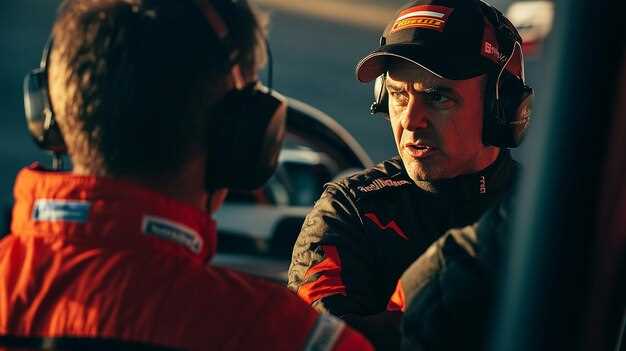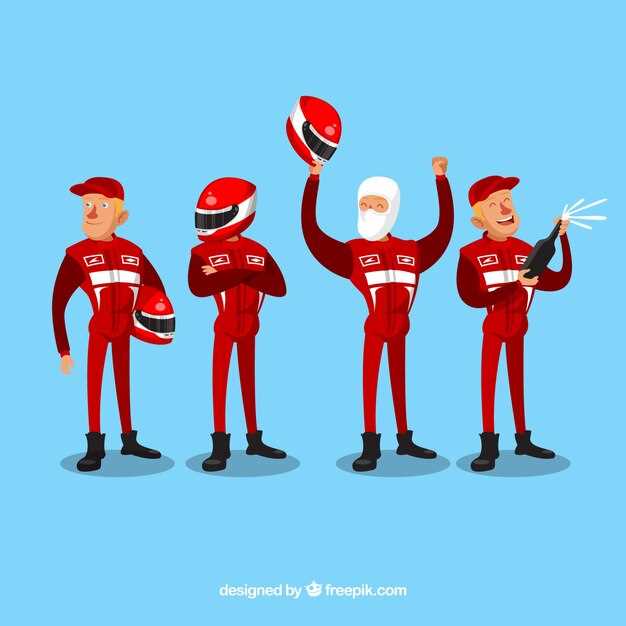
In the world of amateur racing, the importance of a well-organized pit crew cannot be overstated. Teamwork among the crew members is crucial for ensuring that every second counts during pit stops. An efficient pit crew can mean the difference between victory and defeat, transforming a good driver into a champion.
The core of an effective pit crew lies in its structure and defined roles. Each member must understand their specific responsibilities, from tire changes to fueling the vehicle. This division of labor enables the team to operate like a finely tuned machine, where synchronization enhances speed and reduces error. By establishing clear roles, the team can streamline communication, resulting in a seamless pit experience.
Moreover, the chemistry between team members significantly affects performance. Teamwork fosters trust and confidence, allowing crew members to rely on one another during high-pressure situations. A well-coordinated pit crew not only executes tasks swiftly but also adapts to unexpected challenges that may arise during a race. For amateur racers, mastering the nuances of pit crew setup is essential for achieving success on the track.
Choosing the Right Pit Crew Members for Your Racing Team

Selecting the appropriate pit crew members is vital for the success of your racing team. Each role in the pit crew is critical, and having skilled individuals can significantly impact your performance on the track. Start by identifying the specific positions you need to fill within your crew.
1. Tire Change Specialist: This member must excel in swiftly changing tires during pit stops. Their efficiency can reduce downtime, allowing the driver to maintain speed on the track. Look for someone with experience and a proven track record in tire management.
2. Fueler: The fueler is responsible for refueling the car quickly and safely. This role requires precision and coordination as timing is essential. An ideal candidate should have excellent hand-eye coordination and remain calm under pressure.
3. Jack Operator: The jack operator lifts the car during tire changes. This crew member must be physically strong and capable of handling the equipment effectively. They play a crucial role in minimizing the pit stop duration.
4. General Mechanics: Having a couple of skilled mechanics on your crew is beneficial for on-the-spot repairs and adjustments. Choose individuals with a solid understanding of racing dynamics and mechanical systems to ensure the car remains competitive throughout the race.
5. Safety Officer: Safety should always be a priority in racing. Designate a crew member to oversee safety protocols during pit stops. This person should be knowledgeable about fire safety, proper handling of equipment, and emergency procedures.
6. Team Coordinator: This individual manages the overall communication and workflow among the crew. Strong leadership, organization, and the ability to make quick decisions are essential traits. The team coordinator is often the link between the driver and the pit crew, ensuring all operations run smoothly.
When assembling your pit crew, prioritize experience, teamwork, and dedication. Conduct trials to evaluate the efficiency of potential crew members and ensure they can work harmoniously. A well-coordinated and skilled pit crew can make a significant difference, especially in amateur racing where every second counts.
Assigning Specific Roles to Maximize Pit Stop Performance

In amateur racing, the efficiency of a pit crew can significantly influence overall race outcomes. To optimize pit stop performance, it is essential to assign specific roles to each team member based on their strengths and skills.
Firstly, the pit boss should be appointed to oversee the entire operation. This individual is responsible for coordinating the crew, managing communication, and making real-time decisions to ensure the stop remains orderly and efficient. A clear leader fosters a sense of urgency and keeps the focus sharp during critical moments.
Next, the tire changers must be specialized roles that require precision and speed. Dedicated personnel should be assigned to either front or rear tire changes. Each crew member should practice their specific tasks repeatedly to enhance speed and minimize mistakes during actual pit stops.
The fueler is another crucial position. This crew member must handle the fuel hose with precision to ensure that refueling is quick and safe. They should communicate effectively with the pit boss to confirm when the car is ready to receive fuel, avoiding any delays that could impact the overall timing of the stop.
Additionally, the jack operator plays a vital role in lifting the car for tire changes. This crew member must have an excellent understanding of the car’s mechanics and ensure that the jack is positioned correctly and safely. The jack operator’s timing should be synchronized with the tire changers to facilitate an uninterrupted workflow.
Finally, a designated cleanup crew is essential to address any issues that may arise, such as spilled fuel or dropped tools. Having crew members focused on maintaining a safe environment allows the rest of the team to concentrate on their tasks without unnecessary distractions.
By assigning these specific roles and ensuring each member of the pit crew understands their responsibilities, you can maximize performance during pit stops. This not only improves efficiency but also enhances overall teamwork and communication, ultimately leading to greater success in amateur racing events.
Building Teamwork and Communication Strategies in the Pit
Effective teamwork and communication are vital components of a successful pit crew in amateur racing. To ensure seamless operations during a race, establishing clear roles and responsibilities is essential. Each member should understand their specific tasks, from tire changes to fuel refills, minimizing confusion under pressure.
Regular practice sessions are crucial for building cohesion among team members. These sessions allow the crew to familiarize themselves with their roles and enhance their synchronization during pit stops. Simulating race conditions helps identify potential bottlenecks and fosters a culture of openness where crew members can provide constructive feedback.
In addition to practice, effective communication strategies must be implemented to facilitate quick decision-making and problem-solving. Utilizing hand signals or radio communication can streamline interactions, ensuring that all crew members are on the same page. For instance, assigning a crew chief to oversee operations can help coordinate activities and relay essential information during the race.
Creating an inclusive environment where every team member feels valued is equally important. Encouraging input from all crew members fosters a sense of belonging and can lead to innovative solutions. Regular team meetings can address challenges, celebrate successes, and devise strategies for continuous improvement.
Furthermore, developing strong interpersonal relationships within the pit crew enhances trust and morale. Team-building activities outside of racing, such as social gatherings or team challenges, can strengthen bonds and improve collaboration, resulting in more efficient and effective pit stops during races.



